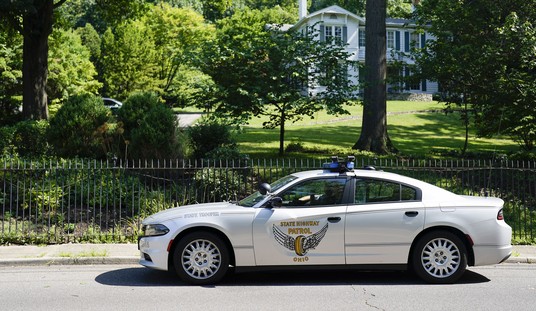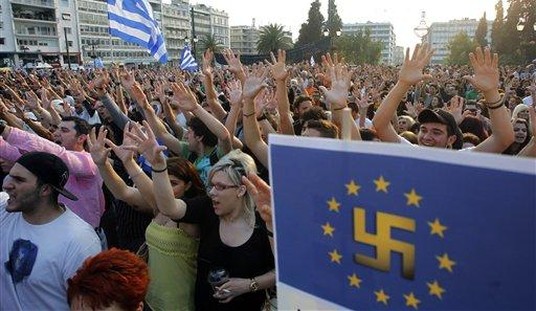To kick off his opus Modern Times, Paul Johnson fired a tremendous opening shot:
At the beginning of the 1920s the belief began to circulate, for the first time at a popular level, that there were no longer any absolutes: of time and space, of good and evil, of knowledge, above all of value. Mistakenly but perhaps inevitably, relativity became confused with relativism.
No one was more distressed than Einstein by this public misapprehension. He was bewildered by the relentless publicity and error which his work seemed to promote. He wrote to his colleague Max Born on 9 September 1920: ‘Like the man in the fairy-tale who turned everything he touched into gold, so with me everything turns into a fuss in the newspapers.’ Einstein was not a practicing Jew, but he acknowledged a God. He believed passionately in absolute standards of right and wrong.
He lived to see moral relativism, to him a disease, become a social pandemic, just as he lived to see his fatal equation bring into existence nuclear warfare. There were times, he said at the end of his life, when he wished he had been a simple watchmaker.
The public response to relativity was one of the principal formative influences on the course of twentieth-century history. It formed a knife, inadvertently wielded by its author, to help cut society adrift from its traditional moorings in the faith and morals of Judeo-Christian culture.
By the 1930s, British elites, which had witnessed totalitarian revolutions in Russia, Germany and Italy and a crippling and sustained economic collapse in the US, wondered why their nation couldn’t hit the reset button and “Start From Zero” as well, British reviewer Matthew Price writes:
Few did more to establish the tenor of the era than Arnold Toynbee, Britain’s own Spengler. In Toynbee’s view, all civilisations hewed to the same pattern, which Overy describes as “creative expansion, mechanistic consolidation, internal decay prompted by cultural stagnation, social division, and a final universal Caesarism”. Just as past civilisations – Mayan, Roman, Greek – had seen glory and then disappeared from the face of the earth, the West would meet a similar fate. His ideas found a receptive audience in the inter-war years. Lecture halls featured talks on topics like “The Decay of Moral Culture” and the poetic if overwrought “The Smoke of Our Burning”. Death was on everyone’s minds – in 1924, one lecturer asked “Why not Commit Suicide?” (Overy does not say how the question was answered). In the mid-1930s, John Boulting (of the famed filmmaking duo the Boulting Brothers), recoiled after a trip to London, where he found only “dirt, disorder and a terrifying din”, another sign of a society plunging “headlong, blindly and almost eagerly towards a gigantic carnival of self-extermination”.
Today, this erudite hysteria may seem unintentionally funny, the hyper-articulate ravings of terrified intellectuals. But Overy notes that these views were hardly outside the mainstream: Britain had been overcome by a tidal wave of despair, and as the 1920s gave way to the years of the Slump, the agitation only increased. Writers fed the public’s appetite for the literature of crisis – The Intelligent Man’s Guide Through the World Chaos, by the socialist writer GDH Cole, sold some 50,000 copies in 1932. (Whatever the state of British civilisation, these years proved a boon to the publishers like Allen Lane, the founder of Penguin Books, and Victor Gollancz, the proprietor of the Left Book Club.)
Overy contends that this was not merely a time of escalating and overheated rhetoric: the prophets of decline were deadly sincere, looking to science, economics, medicine and history to construct elaborate proofs of the nearing of the end. If, as has been suggested, this was primarily the discourse of an educated elite, whose views “reflected the prejudices and the expectations of the educated classes”, the theories of decline found a wide and eager audience – they flourished, Overy writes, “in the first real age of mass communication”.
The Morbid Age is a showcase for the brightest minds of the era, yet the fruits of all this fevered fretting were often less than palatable. [Gosh, ya think? — Ed] The discourse of crisis was extreme in tone; the terms used to describe the state of Britain were invariably apocalyptic and millennial. Moderate voices were drowned by a series of emotive keywords that recur again and again in the literature Overy surveys: decay, menace, disease, barbarism, chaos, descent, sick. Even among some of the most progressive thinkers of the age, as Overy shows, the diagnosis that British civilisation was approaching collapse bore a deeply reactionary tint.
Perhaps the most sinister manifestation of this current was the intellectual vogue for eugenics. The rise and fall of civilisations could, in part, be explained by theories of racial purity. In Britain, many concluded that the wrong people – the poor and the mentally handicapped – were giving birth at a rate that threatened to engulf society in a wave of mediocrity. “We are getting larger and larger dregs at the bottom of our national vats,” concluded one biologist. To counter the trend, the British Eugenics Society, whose members included Julian Huxley and Keynes, promoted a campaign of sterilisation that looked very much like a similar programme implemented in Nazi Germany.
Not to mention the eugenics that began in the preceding Weimar Republic years. (Can you say Death Panels? I knew that you could.)
A similar mixture of Malthusian and Spenglerian doom would depress plenty of liberals on the other side of the pond as well, reaching a peak in the punitive liberalism of the 1970s, a spirit suddenly reborn in November of 2008. Those these days, it’s more fashion; many inheritors of the spirit of cultural morbidity don’t even know the roots of their philosophy.
What’s left of Europe? Well, the old buildings are nice, Megan McCardle writes. But even those, the best minds of the Morbid Age did their damnedest to eradicate, one way or another.










Join the conversation as a VIP Member